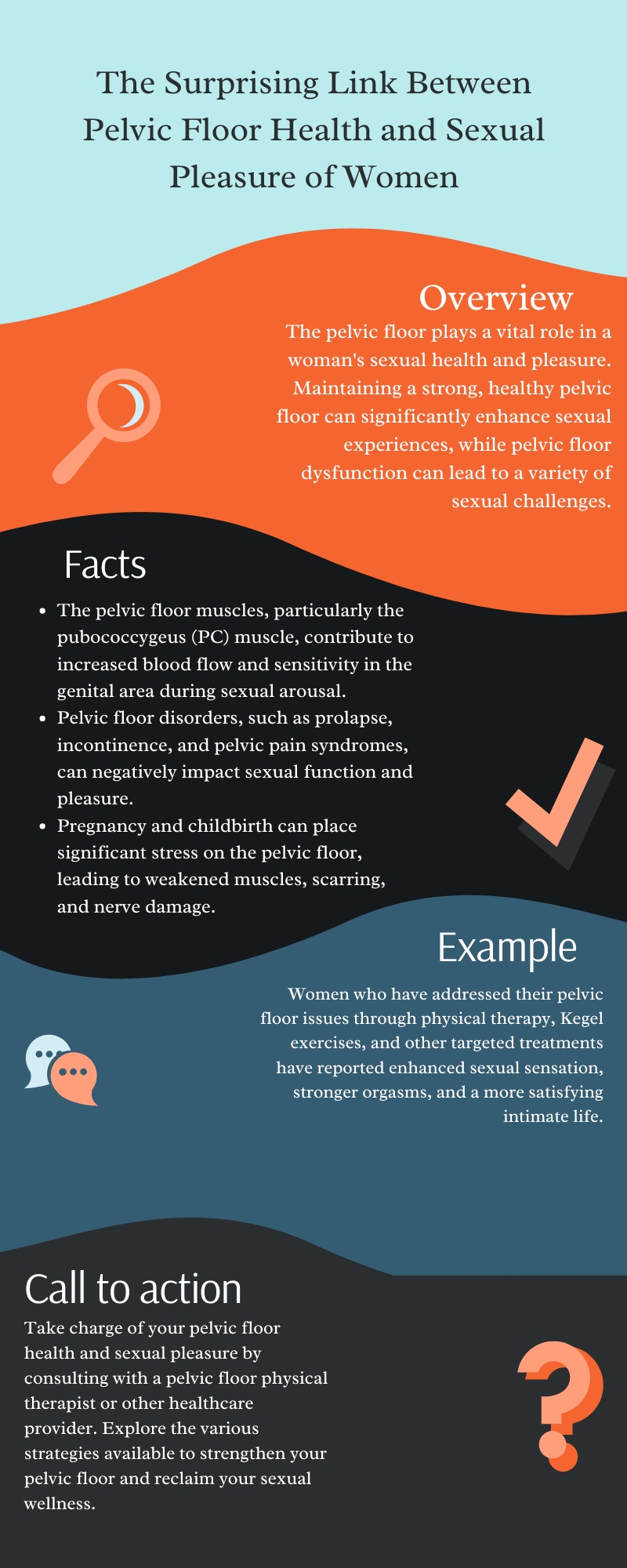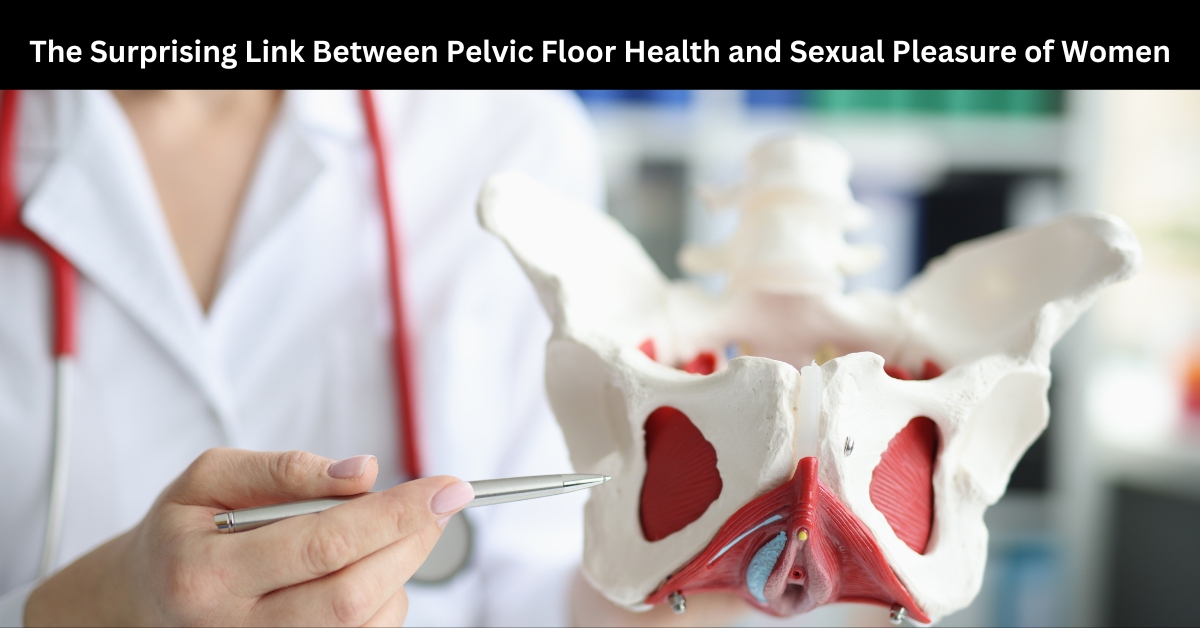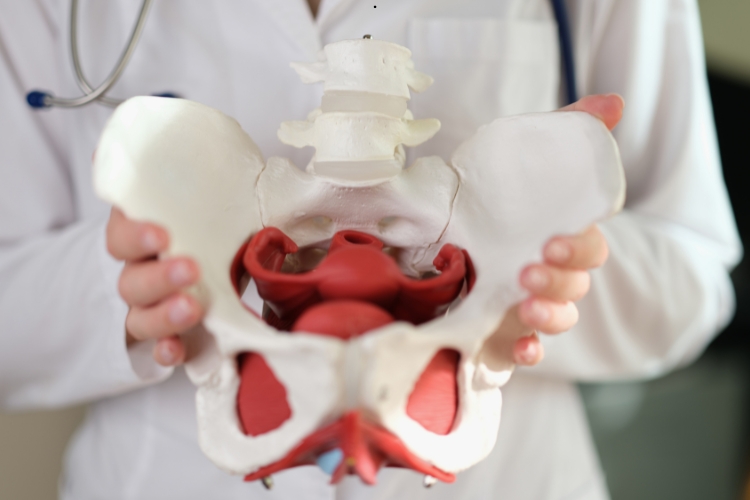The pelvic floor is a crucial yet often overlooked aspect of a woman’s overall health and well-being. Composed of a complex network of muscles, ligaments, and connective tissues, the pelvic floor plays a vital role in supporting the pelvic organs, controlling bladder and bowel function, and even enhancing sexual pleasure. However, many women are unaware of the importance of pelvic floor health and its direct correlation with their sexual experiences.
In this blog article, we will look into the surprising connection between a healthy pelvic floor and the sexual pleasure of women. We will explore the anatomy and function of the pelvic floor, the common pelvic floor disorders that can impact sexual enjoyment, and practical steps women can take to strengthen and maintain their pelvic floor for a more fulfilling intimate life.
Common Pelvic Floor Disorders and Their Impact on Sexual Health!
| Disorder | Description | Impact on Sexual Health |
|---|---|---|
| Pelvic Organ Prolapse | Descent of pelvic organs into the vagina | The feeling of heaviness/pressure, difficulties with intercourse, reduced sexual pleasure |
| Urinary Incontinence | Involuntary leakage of urine | Embarrassment, discomfort, reduced sexual enjoyment |
| Overactive Bladder | Sudden, uncontrollable urge to urinate | Anxiety inhibited sexual spontaneity |
| Pelvic Pain Syndromes | Chronic pelvic pain (e.g., vulvodynia, interstitial cystitis) | Painful intercourse, decreased sexual pleasure |
| Postpartum Pelvic Floor Issues | Weakened muscles, scarring, and nerve damage from pregnancy/childbirth | Decreased sensation, pain during intercourse, difficulty achieving orgasm |
Understanding the Pelvic Floor
The pelvic floor is a unique and intricate part of the human body, serving as a hammock-like structure that supports the pelvic organs, including the bladder, uterus, and rectum. This muscular floor extends from the pubic bone to the tailbone, and it plays a critical role in maintaining bladder and bowel control, as well as facilitating sexual function.
1. Anatomy of the Pelvic Floor
The pelvic floor is composed of several layers of muscles, ligaments, and connective tissues, including:
- Levator ani muscle: The largest and most important muscle of the pelvic floor, responsible for supporting the pelvic organs and controlling the opening and closing of the urethra, vagina, and rectum.
- Coccygeus muscle: A smaller muscle that connects the tailbone (coccyx) to the pelvic bone, providing additional support to the pelvic organs.
- Pubococcygeus muscle (PC muscle): A key component of the pelvic floor, often referred to as the “love muscle” due to its role in sexual function.
- Urethral and anal sphincter muscles: Responsible for controlling the flow of urine and bowel movements, respectively.
2. Functions of the Pelvic Floor
The pelvic floor’s primary functions include:
- Organ Support: Providing structural support to the pelvic organs, preventing them from descending or prolapsing.
- Bladder and Bowel Control: Regulating the opening and closing of the urethra and rectum to maintain continence.
- Sexual Function: Enhancing sexual pleasure and orgasmic intensity through the contraction of the pelvic floor muscles.
- Stabilization: Contributing to core stability and posture by working in coordination with the abdominal and back muscles.
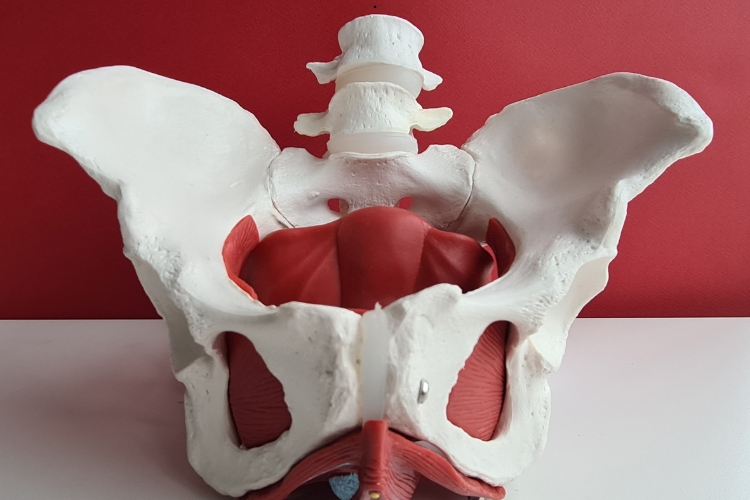
The Link Between Pelvic Floor Health and Sexual Pleasure
The pelvic floor plays a crucial role in a woman’s sexual function and pleasure. A strong, healthy pelvic floor can significantly enhance sexual experiences, while a weakened or dysfunctional pelvic floor can lead to a variety of sexual challenges.
1. Enhancing Sexual Pleasure
The pelvic floor muscles, particularly the pubococcygeus (PC) muscle, are intimately involved in the sexual response cycle. During sexual arousal, the pelvic floor muscles contract and relax, contributing to increased blood flow and sensitivity in the genital area. This heightened sensation can lead to more intense and satisfying orgasms.
Additionally, a strong pelvic floor can improve a woman’s ability to control and coordinate the muscle contractions associated with orgasm, resulting in more pleasurable and satisfying sexual experiences.
2. Addressing Sexual Challenges
Pelvic floor dysfunction, such as weakened or overactive pelvic floor muscles, can contribute to various sexual challenges, including:
- Decreased sexual arousal and lubrication
- Difficulty achieving orgasm or reduced orgasmic intensity
- Pain during sex (dyspareunia)
- Decreased sensation and sexual pleasure
- Incontinence during sexual activity
By addressing the underlying pelvic floor issues, women can often experience significant improvements in their sexual function and overall satisfaction.

Common Pelvic Floor Disorders and Their Impact on Sexual Health
Several pelvic floor disorders can impact a woman’s sexual health and pleasure. Understanding these conditions and their associated symptoms is crucial for seeking appropriate treatment and restoring pelvic floor health.
1. Pelvic Organ Prolapse
Pelvic organ prolapse occurs when the pelvic organs (uterus, bladder, or rectum) descend from their normal position and protrude into the vagina. This can lead to a feeling of heaviness or pressure in the pelvic area, as well as difficulties with sexual intercourse and reduced sexual pleasure.
2. Urinary Incontinence
Urinary incontinence, the involuntary leakage of urine, is a common pelvic floor disorder that can have a significant impact on a woman’s sexual life. Stress incontinence, in particular, can cause urine leakage during sexual activity, leading to embarrassment, discomfort, and reduced sexual enjoyment.

3. Overactive Bladder
An overactive bladder, characterized by a sudden, uncontrollable urge to urinate, can also interfere with sexual function. The constant need to visit the bathroom and fear of involuntary urine leakage can create anxiety and inhibit sexual spontaneity.
4. Pelvic Pain Syndromes
Conditions such as vulvodynia, interstitial cystitis, and endometriosis can cause chronic pelvic pain, which can make sexual intercourse painful and less pleasurable. These pain syndromes are often associated with pelvic floor muscle dysfunction.
5. Postpartum Pelvic Floor Issues
Pregnancy and childbirth can place significant stress on the pelvic floor, leading to weakened muscles, scarring, and nerve damage. This can contribute to a range of sexual challenges, including decreased sensation, pain during intercourse, and difficulty achieving orgasm.
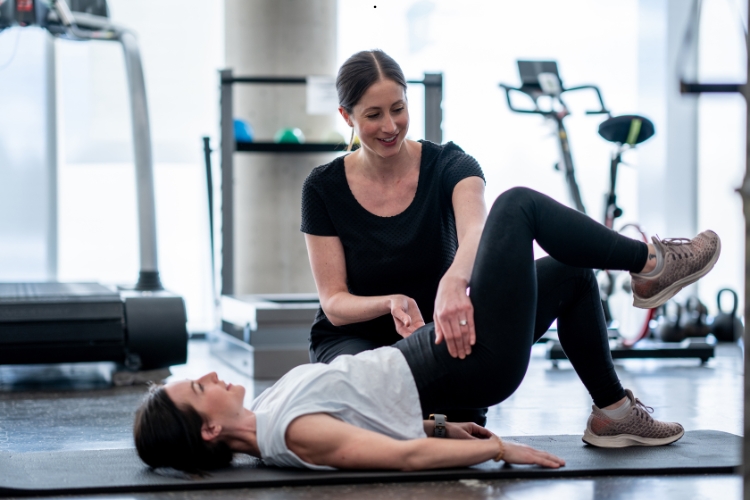
Improving Pelvic Floor Health for Better Sexual Pleasure
Fortunately, there are various strategies and treatments available to help women improve their pelvic floor health and enhance their sexual pleasure.
1. Pelvic Floor Physical Therapy
Pelvic floor physical therapy is a specialized form of treatment that focuses on strengthening and rehabilitating the pelvic floor muscles. A trained pelvic floor physical therapist can help identify and address any muscle imbalances or dysfunctions, and provide personalized exercises and techniques to improve pelvic floor function.
2. Kegel Exercises
Kegel exercises, named after Dr. Arnold Kegel, are a commonly recommended method for strengthening the pelvic floor muscles. These exercises involve the repeated contraction and relaxation of the pubococcygeus (PC) muscle, which can help improve sexual sensation and orgasmic intensity.
3. Biofeedback Therapy
Biofeedback therapy uses specialized equipment to help women become more aware of and gain control over their pelvic floor muscles. By providing real-time feedback on muscle activity, biofeedback can assist in the re-education and strengthening of the pelvic floor.
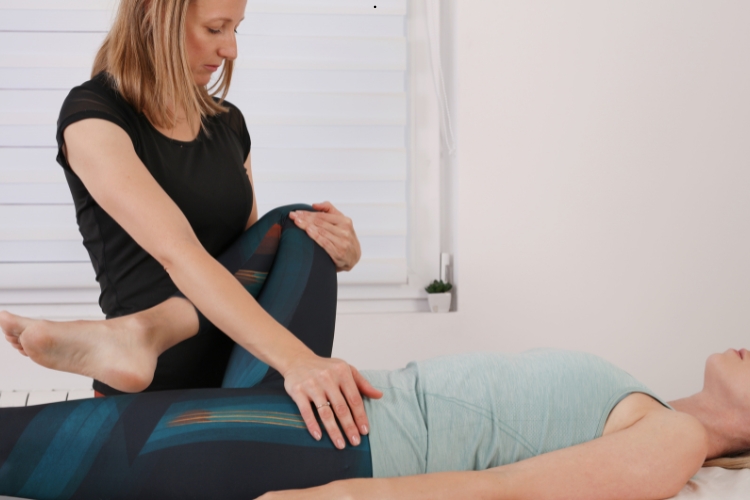
4. Vaginal Dilators
For women experiencing pelvic pain or discomfort during intercourse, the use of vaginal dilators can help gradually desensitize the area and improve flexibility and comfort. These dilators come in a set of different sizes and are used under the guidance of a healthcare professional.
5. Lifestyle Modifications
Simple lifestyle changes can also contribute to improved pelvic floor health and sexual pleasure. These include maintaining a healthy weight, practicing good posture, and avoiding constipation and straining during bowel movements.
6. Holistic Approaches
In addition to the above strategies, some women may find benefit in exploring holistic approaches to pelvic floor health, such as yoga, meditation, and breathwork. These practices can help reduce stress and tension, which can have a positive impact on sexual function.

The Importance of Seeking Professional Help
While many pelvic floor issues can be addressed with self-care and at-home exercises, women must seek professional guidance when experiencing persistent sexual or pelvic health concerns. Healthcare providers, such as pelvic floor physical therapists, gynecologists, and urogynecologists, can provide comprehensive assessments, diagnoses, and tailored treatment plans to address the underlying causes of pelvic floor dysfunction and sexual challenges.
Conclusion
The pelvic floor plays a vital role in a woman’s sexual health and pleasure. By understanding the anatomy and function of the pelvic floor, as well as the common pelvic floor disorders that can impact sexual experiences, women can take proactive steps to improve their pelvic floor health and enhance their intimate lives.
Through a combination of pelvic floor physical therapy, targeted exercises, and holistic approaches, women can strengthen their pelvic floor, address any underlying issues, and enjoy more fulfilling and satisfying sexual experiences. Remember, taking care of your pelvic floor is an investment in your overall well-being and sexual enjoyment.
FAQs:
- How does the pelvic floor impact a woman’s sexual pleasure?
The pelvic floor plays a crucial role in a woman’s sexual function and enjoyment. The pelvic floor muscles, particularly the pubococcygeus (PC) muscle, contribute to increased blood flow and sensitivity in the genital area during sexual arousal. A strong, healthy pelvic floor can lead to more intense and satisfying orgasms, as well as improved control over the muscle contractions associated with orgasm. Addressing pelvic floor dysfunction, such as weakened or overactive pelvic floor muscles, can significantly improve a woman’s sexual experiences. - What are the common pelvic floor disorders that can affect sexual health?
Several pelvic floor disorders can impact a woman’s sexual health and pleasure. These include pelvic organ prolapse (when pelvic organs descend into the vagina), urinary incontinence (involuntary leakage of urine), overactive bladder (sudden, uncontrollable urge to urinate), pelvic pain syndromes (such as vulvodynia and endometriosis), and postpartum pelvic floor issues (weakened muscles, scarring, and nerve damage from pregnancy and childbirth). These conditions can lead to decreased sexual arousal, difficulty achieving orgasm, pain during intercourse, and reduced overall sexual pleasure. - What are the best ways to improve pelvic floor health for better sexual pleasure?
There are several effective strategies to improve pelvic floor health and enhance sexual pleasure, including:
- Pelvic floor physical therapy to identify and address muscle imbalances or dysfunctions
- Kegel exercises to strengthen the pubococcygeus (PC) muscle
- Biofeedback therapy to improve awareness and control of pelvic floor muscles
- The use of vaginal dilators to gradually desensitize the area and improve comfort during intercourse
- Lifestyle modifications such as maintaining a healthy weight, practicing good posture, and avoiding constipation
- When should a woman seek professional help for pelvic floor and sexual health concerns?
While many pelvic floor issues can be addressed with self-care and at-home exercises, it’s important for women to seek professional guidance when experiencing persistent sexual or pelvic health concerns. Healthcare providers, such as pelvic floor physical therapists, gynecologists, and urogynecologists, can provide comprehensive assessments, diagnoses, and tailored treatment plans to address the underlying causes of pelvic floor dysfunction and sexual challenges. Seeking professional help is crucial for ensuring optimal pelvic floor health and sexual enjoyment.
